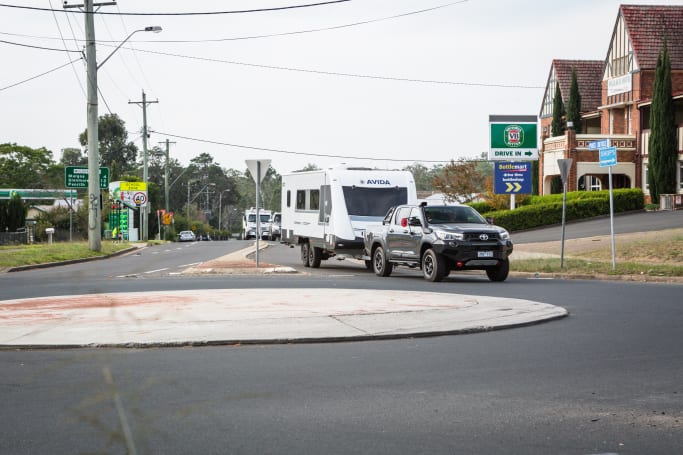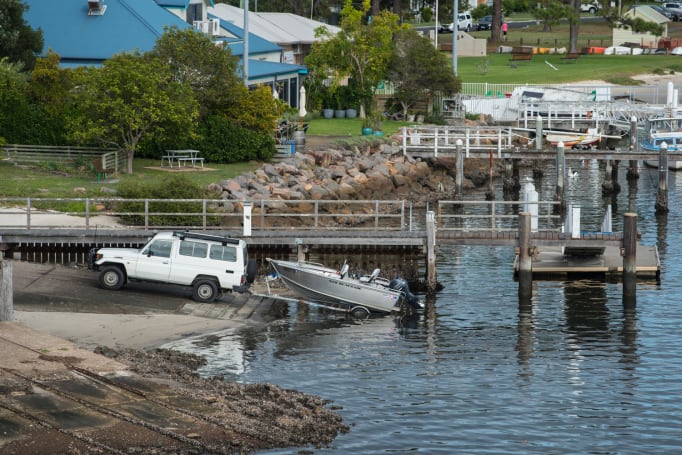
How to safely tow a caravan
.jpg)
Towing a caravan can be difficult – especially when you're first attempting it – but it needn't be. Controlling a heavy rig combination in different conditions, as well as mastering new driving techniques, is a real challenge that, like anything, is much easier to do the more you do it.
Here are a few of our expert tips to get you up to speed with safe caravan towing.
Use a check-list
A great idea if you're new to caravanning is make a comprehensive list of all the things you need to do before heading off and refer to it at all times in your pre-departure phase. This story assumes that you've done all of the pre-trip checks and servicing prior to your trip – if not, read this feature first, then come back to this story (below).

Lock everything down
Make sure that all windows and hatches (and bathroom entry and shower doors) in your caravan are secured before you head off. Also, ensure that the TV bracket is locked into the retracted position (or better still, the TV stored away), that the trailer plug is securely connected, and that the coupling pin handle is securely locked in the down position. An easy thing to forget is to put away anything you've left out on benchtops - it won't stay there very long once you're on the move.
A great habit to get into just before getting onto the road is to do a final visual check, slowly moving from the front of the trailer, where it's hitched to the tow vehicle, to the rear.
The things you'll want to make sure are done are that the trailer plug is plugged in and the coupling, safety chains and breakaway wire (for caravans or trailers weighing more than 2000kg and with electric brakes) are all securely connected.
Then make sure the trailer handbrake is disengaged, the jockey wheel is securely tucked away and that the jockey wheel clamp is tightened back up. Even though you would probably have had to raise the stabiliser legs just to get the trailer lowered onto the towball, it's still worth giving them all a final check to see that they're locked securely in place for travel.
If you're using a weight-distribution hitch, check that it is properly connected and the safety pins are fitted to the A-frame clamps.
Check that the gas bottles are turned off.

Scan the van's body, a final check to see that all windows, latches, hatches and the entry door are securely fastened, and the awning winder is set to the 'closed' position and awning arms secured.
Finally, remove the wheel chocks, take a final look around on the ground around the trailer in case you've left items behind, such as the awning pull rod or stabiliser leg winder handle.

Keep up concentration
Even though you're driving relatively slowly, towing takes a lot out of you. You have to concentrate a lot more than when not towing; with allowing the extra space on the road a big trailer needs, allowing for extra braking and acceleration distances of a heavy rig and being vigilant about trailer sway it's no wonder it's easy to become fatigued. Make sure you stay fresh by taking the opportunity to have regular rest stops - schedule a break every two hours and stick to them. Caffeine hits and chocolate bars alone won't cut it; you must get enough rest throughout the day and, if you're doing a multi-day trip, ensure that you are getting quality rest every night.

Watch for danger
A lot of being a safe driver is about awareness and anticipation – and that applies to any sort of driving, whether you're towing a load or not.
Scan for potential obstacles ahead – power poles close to a cambered road, wide loads on the highway, wildlife on or near the road – and always maintain a safe distance from the vehicle travelling in front of you – a five-second gap should suffice – as that will give you plenty of extra braking room.
The aim is to achieve a happy balance between smooth acceleration, gentle braking, minor steering changes and steady momentum. Basically, you want to avoid sudden, jerky movements in direction or speed of the tow vehicle or caravan: no hard acceleration, no heavy braking, and no fast, sharp turns.
Slow down well ahead of time when approaching traffic lights that are changing to red, or are already red; the aim is to minimise the necessity to stop completely.
Bonus: smooth driving is safer, more fuel efficient and it results in less cumulative wear and tear on your vehicle and the caravan.

On narrow urban streets or country tracks, look well ahead of your position for natural (tree branches) or man-made hazards (other vehicles, traffic posts) that may impede you as you attempt to pass through.
When going around a corner, take the widest line you can through it because the trailer will cut the corner. Basically, ride the centre line as closely as is safely possible and take the corner as late and as wide as you can. On roundabouts, turn as late as you can so the trailer gets safely around.
Avoid overtaking but if you're going to do it, allow plenty of time and room on the road in which to achieve a safe and smooth move – because overtaking is a much slower process for a vehicle-and-trailer combination, than it is for a vehicle alone.
When driving up hills, try to allow a little more speed on approach rather than too little. That is, ensure you're at your safe maximum touring speed or the maximum posted speed limit (which ever is lower) as you approach the hill. Do everyone behind you a favour by sticking behind a slower truck in the left lane rather than inching past it in the overtaking lane.
When driving down hills, rather than ride the brakes, use your gears so that your vehicle's engine braking will safely slow your progress.

Keep clear of large trucks
Wind buffeting from trucks can push your caravan around and cause sway, so adjust your driving style when faced with these. When a truck is passing you, move away from it as much as you can, ease off the accelerator, ready yourself for a bit of a wind blast and simply let the heavy vehicle go by.
The same rule applies to high-wind areas: slow down and steel yourself for gusts.
If your trailer does start to sway in any scenario, slow down (just ease off the accelerator, don't touch the tow vehicle's brakes), apply the electric brake override and apply some throttle to get your trailer steady and back in line.

How to reverse your caravan
Practice reversing a lot and do it in a non-stressful environment – the empty carpark of a sports ground or similar. Reverse a caravan repeatedly and get comfortable with the process.
When it comes time to reverse your caravan, first up, get out and check the area you're about to reverse out of or into and make sure it is clear of hazards (low-hanging tree branches, taps), obstacles (children's bikes).
Next: don't rush, it never ends well when towing. If you hurry to back your trailer out of a spot or into a campsite, caravan park site or your boat and trailer onto a boat ramp, then you're adding undue stress to the situation, risking damage to trailer and vehicle, and possibly injury to people nearby.
If possible, have someone stand outside, at a safe distance where you can see them, and communicate directions to you via agreed-on hand signals or a hand-held radio.
A slow, steady speed is crucial when backing up – it gives you ample time to correct the trailer's direction – and in the main, it's best to use only small moves of the steering wheel to adjust the trailer's path.
When reversing, remember it's counter-intuitive: turn your steering wheel in the opposite direction to how you actually want the trailer to go, i.e. turn your wheel to the right if you want the trailer to go left.
The most important thing that even regular towers can forget is that if you have totally mucked-up your reverse manouvre, there is a simple fix. That is, if you drive forward a few metres, that dreadful tangle you just created with vehicle and trailer will become unknotted. Then select reverse and have another crack.











Comments